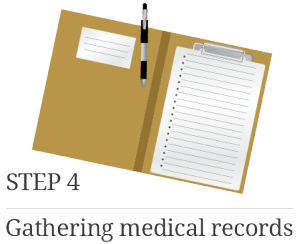We overheard two teens arguing recently. One countered the other’s accusation of some harmful act by declaring, “Statute of limitations!” She was saying that it had been too long since she had committed the wrong to bring it up.
Statutes of limitations are deadlines. They are periods of time established by individual states for bringing legal action, including personal injury and wrongful death lawsuits seeking compensation after car accidents caused by other drivers.
In Kentucky and Indiana, most personal injury and wrongful death claims involving motor vehicles must be filed within two years of when the injury occurred, though there are exceptions. In Tennessee, an injured person has one year to file a claim. The statute of limitations may also vary according to whether minors are involved and whether the injured person was incapacitated so they couldn’t make any decisions for a period of time.
It’s important to recognize that the process of filing a car accident injury lawsuit needs to start well ahead of the filing deadline. The time to get started on a legal claim is as soon as possible after your auto accident. Starting an investigation right away increases the likelihood that your lawyers may be able to find and preserve evidence that supports your injury claim.
Keep in mind that the defendants in that lawsuit – or their attorneys or insurance company – have little to gain by cooperating with you and your attorneys. They may drag their feet or create obstacles that interfere with progress in the hope that the statute of limitations comes into play and forces you to settle or abandon your claim.
There are several steps to take before a lawsuit can be filed. Generally speaking, developing a lawsuit after a car accident may involve the following steps.
1. An initial legal consultation, in which a lawyer assesses your claim and considers the initial feasibility of winning a lawsuit or obtaining a settlement.

2. Gathering accident evidence, which may include the police report, an analysis of the accident scene, examination of the vehicles, acquisition of “black box” data available in some cars and the defendant’s cell phone data, and more. Obtaining information that belongs to the defendant may require a court order, which requires more time.

3. Interviews with witnesses to get their version of what happened in the accident. It’s important to get witness statements while the details are still fresh.

4. Gathering medical records and having to determine the extent and cost of your injuries. This may require having medical consultants analyze medical records and prepare written reports of their findings.

5. Obtaining vehicle repair or replacement estimates, to determine property damage losses. Typically, automobile owners can handle filing a property damage claim without a lawyer, but we can offer guidance if needed.
6. Obtaining work absence records and other evidence of your financial losses.
7. In some cases, having accident reconstruction experts determine how an accident happened and developing a report for your attorneys.
8. Weighing losses and evidence of defendants’ liability and determining the feasibility of obtaining a settlement or court verdict that makes it financially feasible to move forward with a lawsuit.
9. Drafting and filing the lawsuit.
After an initial consultation, each of the following steps may take weeks to accomplish. When we must rely on outside experts to examine medical records or reconstruct an accident, there are often unexpected delays in the process. The bottom line is to speak with a knowledgeable car accident attorney as soon as possible after an accident to review your legal options and allow as much time as possible to complete the investigation and bring a well-prepared claim.
Like most things, sooner is better when it comes to contacting a car accident lawyer about injuries you have suffered because of another person’s negligence. In Kentucky, Indiana, Ohio, or Tennessee, Becker Law Office is ready today to get started.
Don’t let “Statute of limitations!” stop your claim in its tracks.
For additional information, read about proving fault in a car accident case.